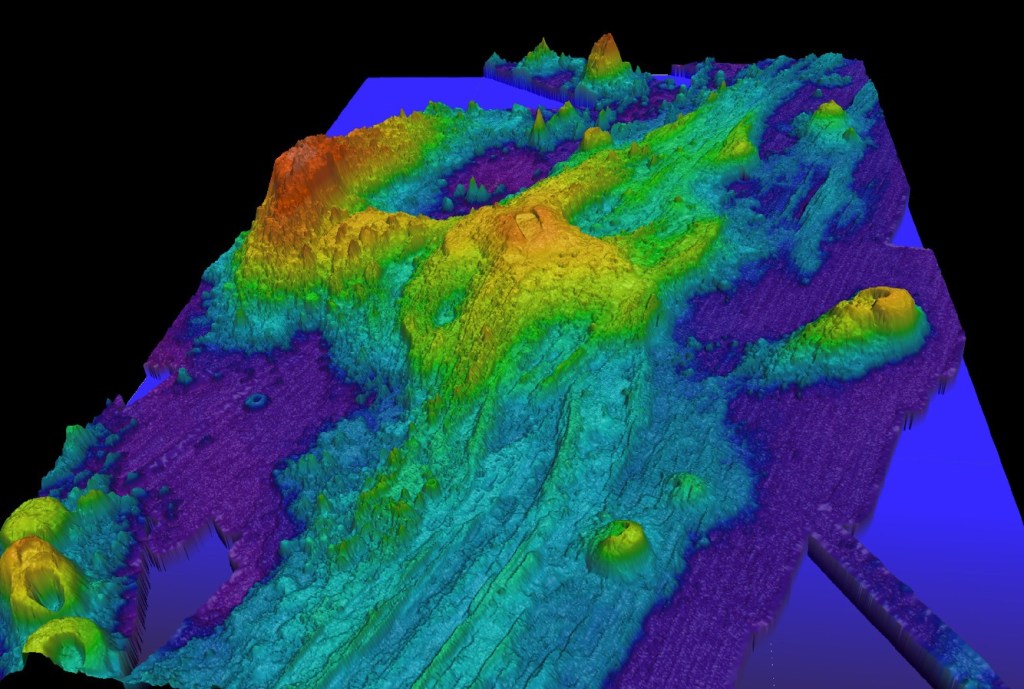Exploring the Hidden World of Underwater Volcanoes: Origins, Impact, and Recent Discoveries

The ocean’s depths are home to some of the Earth’s most dramatic and mysterious geological phenomena—underwater volcanoes. Hidden beneath miles of water, these volcanic giants not only reshape our planet’s crust but also create unique ecosystems thriving in the darkness. In this article, we’ll explore the origins of underwater volcanoes, their significance, and the latest findings from the Pacific Northwest.
What is an Underwater Volcano?
An underwater volcano forms when magma rises from beneath the Earth’s crust and erupts on the seafloor. Most of these volcanoes are found along mid-ocean ridges, where tectonic plates are moving apart. Unlike the familiar mountains we see on land, a submarine volcano can remain invisible for millennia, only revealing itself through seismic activity, hydrothermal vents, and—occasionally—dramatic eruptions.
One of the most active regions for underwater volcanoes on the planet is the Juan de Fuca Ridge off the coast of Oregon. Recent technological advancements now allow scientists to discover and map these hidden giants in unprecedented detail, deepening our understanding of Earth’s dynamic processes.
How Underwater Volcanoes Shape Our Planet
Underwater volcanic activity plays a crucial role in creating new seafloor and driving the movement of continents. The eruption of an underwater volcano releases minerals and heat, which, in turn, shape the underwater landscape. Over time, repeated eruptions can even build seamounts and island chains.
Hydrothermal vents, formed near these volcanoes, churn out mineral-rich waters. These seemingly inhospitable areas are actually oases of marine life, supporting unique organisms such as tubeworms, crabs, and microbes that thrive in extreme conditions. These biological communities provide key insights into how life can survive in harsh, isolated environments.
Recent Underwater Volcano Discoveries and Eruptions
Recently, scientists have mapped a massive underwater volcano off the Oregon coast for the first time, revolutionizing our view of the ocean’s hidden terrain. As detailed in the article "Massive underwater volcano mapped for first time shows hidden ocean world", new bathymetric technologies—like multibeam sonar on underwater drones—have enabled high-resolution imaging of the seafloor. This discovery is not just about finding a new geological feature; it’s about uncovering chapters of our planet’s history and improving our ability to predict events like tsunamis.
One of the region’s most famous—and currently most active—underwater volcanoes is the Axial Seamount, located about 300 miles off the Pacific Northwest coast. There is growing excitement in the scientific community as signs suggest it could erupt soon. Instruments show the seafloor at Axial Seamount is bulging, a classic indicator of impending volcanic activity. For a detailed exploration of Axial’s possible eruption and its significance, read "The Most Active Volcano In the Pacific Northwest Is Probably About To Blow, Maybe | IFLScience" and "Axial Seamount volcano set to erupt off Oregon coast for first time since 2015".
Why Study Underwater Volcanoes?
Understanding underwater volcanoes matters for several reasons:
- Geological Discovery: Mapping these volcanoes helps explain the movement of Earth’s plates and the formation of new crust.
- Risk Assessment: Monitoring volcanic activity below the sea can improve tsunami warning systems and earthquake predictions.
- Ecosystem Insights: Studying the life around these volcanoes reveals how extreme environments support unique life forms.
- Resource Exploration: Volcanic vents often release minerals like copper, zinc, and even gold, hinting at sustainable resource possibilities for the future.
The Future of Underwater Volcano Exploration
With less than 20% of our oceans truly mapped, the mysteries of the seafloor are only beginning to unfold. Each new underwater volcano discovered brings us closer to understanding Earth’s evolution. Advances in autonomous underwater vehicles, deep-sea submersibles, and seismic monitoring mean more breakthroughs are likely on the horizon.
Conclusion
Underwater volcanoes are key to life on our planet, past and future. From building the seafloor to nurturing bizarre and beautiful creatures, their impact is profound yet often unseen. As technology uncovers new depths and eruptions, our knowledge of these fascinating giants continues to grow. Stay curious and follow ongoing research for more astonishing discoveries about the world beneath the waves.